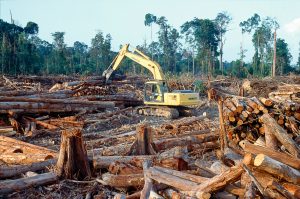Environmental degradation disproportionately afflicts children, people in poverty, and those in vulnerable situations. In Southeast Asia, air pollution, unsafe drinking water, and the ravages of climate change-linked disasters affect human health and livelihoods, and threaten the region’s development “miracle” in Southeast Asia. The region – like Latin America, my home for many years – is also among the more dangerous parts of the world to be an environmental human rights defender.
Yet, I have also seen first-hand how people in vulnerable situations are the ones triggering change – and certain courts and national human rights institutions in the region are handing down progressive legal interpretations to match.
People in Indonesia, the Philippines, Thailand, and Vietnam have used the explicit recognition of the right to a healthy environment in their national constitutions to challenge environmentally-harmful projects.
Malaysian judges have interpreted the phrase “right to life” as including the right to live in an environment that is reasonably healthy and pollution-free.
In the Philippines in 2008, the Supreme Court made a landmark ruling in favor of a group of 14 young Filipinos who had filed a complaint seeking “the cleanup, rehabilitation, and protection” of Manila Bay. The ruling directed government departments and agencies to clean up and protect the bay for future generations, and prevented the granting of any further permits for polluting activities.
In 2019, after a four-year inquiry following the destruction of Typhoon Haiyan, the Philippine Commission on Human Rights handed down its findings on the role of 47 fossil fuel companies, the so-called Carbon Majors. The Commission concluded that these international firms had engaged in climate denial, obstruction, and deception – and could therefore face criminal charges for human rights violations.
The Association of Southeast Asian Nations (ASEAN), as a regional organization, has to a certain extent kept pace with the its member states’ growing interest in environmental rights. In 2012, governments in the region adopted the ASEAN Human Rights Declaration, which recognizes the right to a “safe, clean and sustainable environment.” In 2015, the region adopted the ASEAN Community Blueprints 2025, a set of policy frameworks that seek to advance the elements comprising a healthy environment: clean air, water and sanitation, a safe climate, sustainable food systems, non-toxic environments, and healthy ecosystems and biodiversity.
Yet more than this is needed. Environmental human rights defenders are all too often harassed, threatened, and jailed by the region’s governments. ASEAN must go beyond well-intentioned statements to fully respecting and protecting people’s procedural rights to access information, participate in public decision making, and have access to justice and remedy in cases of environmental harm. Turning human rights commitments into practice is not only an option but an obligation of states, in line with international law.
ASEAN and its member states could strengthen the right to a healthy environment in several ways. First, countries could individually sign on to the Aarhus Convention on access to information, public participation in decision-making, and access to justice in environmental matters. This 1998 convention links environmental rights and human rights, and provides a framework for countries to strengthen their own legal systems. Originally a European agreement, the Aarhus Convention is now open for global signature; several Central Asian nations are parties.
Second, ASEAN countries could develop their own regional convention to address shared transboundary issues and support action on climate, ecosystems, and biodiversity. Countries could also embark on a process to integrate an explicit human rights-based approach into the ASEAN Community Blueprints. Such an approach is currently lacking in the ASEAN region. The Latin American and Caribbean region already has its own regional instrument for environmental rights, the Escazú Agreement, which recognizes similar rights as does the Aarhus Convention.
Third, ASEAN could build on the active role played by many of its own member states in various multilateral environmental agreements and human rights conventions, by coordinating regional positions and issuing joint statements to the global community.
Healthy ecosystems and biodiversity provide vital contributions from nature to people, in the food we eat, the water we drink, and the air we breathe. One important opportunity to recognize this will come at the Conference of the Parties of the Convention on Biological Diversity that is due to take place in Kunming, China, in 2021. ASEAN could propose the incorporation of human rights in the post-2020 global biodiversity framework – the approaches and targets that the world will adopt in Kunming – and support calls for the United Nations to recognize the right to a healthy environment.
Human rights and caring for nature are two sides of the same coin. In Southeast Asia, so are the fight against poverty and the race to save our planet.
Dr. Claudia Ituarte-Lima is an international public lawyer and scholar specializing in issues at the nexus of human rights, biodiversity and climate law. She is a senior researcher at the Raoul Wallenberg Institute, and is visiting scholar at the University of British Columbia. She can be found on twitter @CItuarteLima.

































